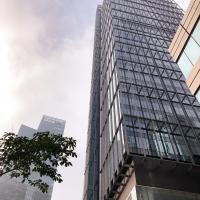Glass Skyscrapers: An Environmental Boon to The Built Environment

- 2019-07-08
- Green Biz
New York Mayor Bill de Blasio has declared that skyscrapers made of glass and steel "have no place in our city or our Earth anymore." He argued that their energy inefficient design contributes to global warming and insisted that his administration would restrict glassy high-rise developments in the city.
Glass always has been an unlikely material for large buildings, because of how difficult it becomes to control temperature and glare indoors. In fact, the use of fully glazed exteriors only became possible with advances in air conditioning technology and access to cheap and abundant energy, which came about in the mid-20th century. Studies suggest that on average, carbon emissions from air-conditioned offices are 60 percent higher than those from offices with natural or mechanical ventilation.
The Crystal Palace was the first large-scale example of a glass structure designed specifically for use by people. It was designed by Joseph Paxton, chief gardener at the Duke of Devonshire’s Chatsworth Estate, drawing on his experience constructing timber-framed glasshouses.
In the Crown Hall, each bay of the glass wall is equipped with iron flaps, which students and staff of the IIT School of Architecture had to manually adjust to create cross-ventilation. Blinds also could be drawn to prevent glare and reduce heat gains. Yet these methods could not achieve modern standards of comfort. This building, and many others with similar features, eventually were retrofitted with air conditioning.
There’s an urgent need to take a fresh look at urban architecture, with a sense of environmental realism. If de Blasio’s plea for a more climate-conscious architecture is to materialize, future architects and engineers must be equipped with an intimate knowledge of materials — especially glass — no less developed than that held by 19th-century gardeners.